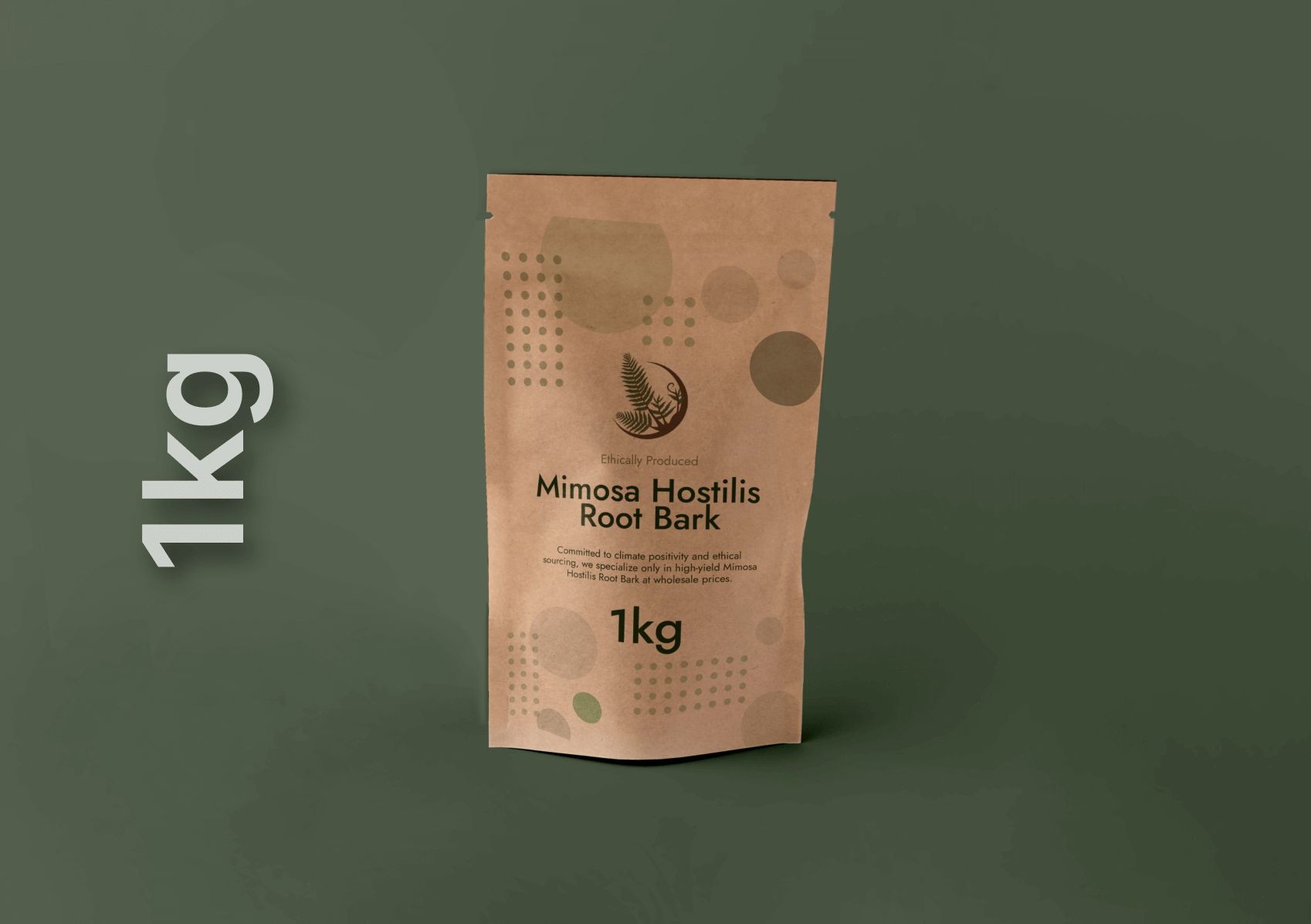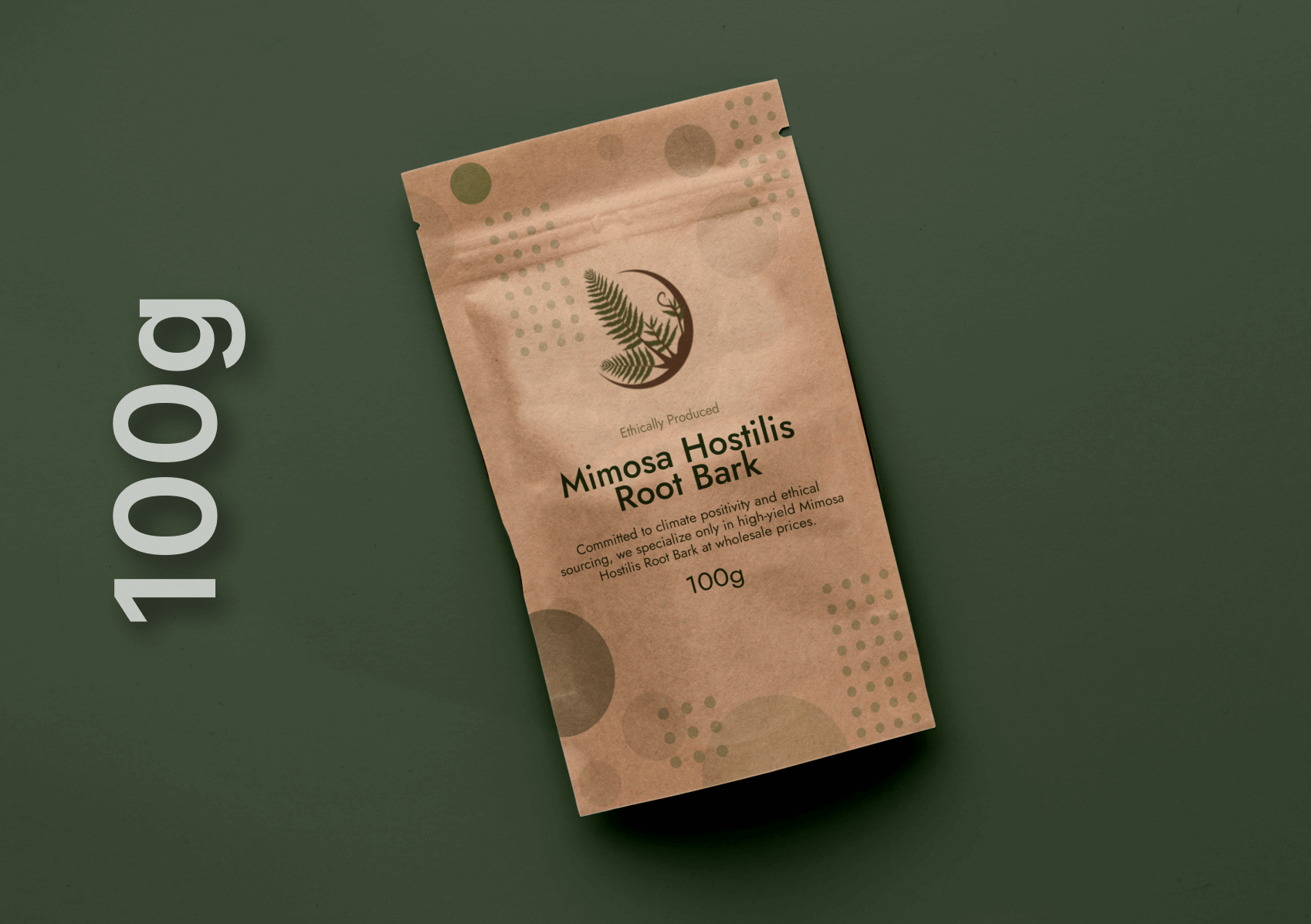Mimosa hostilis, this old plant of immense cultural importance, has only recently attracted the attention of next-generation laboratories. With the coming together of conventional ethnobotanical wisdom and advanced analytical methods, researchers are ushering in a new age in phytochemical science and therapeutic potential.
The Rebirth of an Ancient Botanical
Mimosa hostilis, or Jurema preta, has been utilized for many generations by South American Indigenous populations. Its bark, which contains bioactive alkaloids, has been used in traditional ceremonies and folk medicine. Contemporary science now attempts to confirm and build on these indigenous observations, using strict methodologies to identify each molecular entity with unprecedented accuracy.
Phytochemical Profiling: Beyond Alkaloids
While DMT tends to make headlines, Mimosa hostilis holds a rich mixture of other flavonoids, tannins, and terpenoids. Sophisticated chromatographic and spectrometric tools—like UHPLC‑MS/MS and NMR spectroscopy—enable scientists to:
- Measure trace compounds in parts per billion
- Clarify molecular structure at atomic resolution
- Find new metabolites with emerging bioactivity
Analytical Breakthroughs: Techniques Driving Discovery
High‑Resolution Mass Spectrometry (HRMS)
HRMS devices offer mass accuracy to a few parts per million, allowing scientists to separate closely related molecular species and reveal unobserved minor constituents.
Nuclear Magnetic Resonance (NMR) Spectroscopy
Through the exploitation of 1D and 2D NMR experiments, researchers can chart carbon–proton connectivity, providing the full stereo-chemical view—essential for interpreting pharmacological interaction.
Metabolomics and Bioinformatics
Integration of untargeted metabolomics and its feed into machine learning algorithms accelerates the identification of biomarker candidates, prediction of biological activities, and even guides pre-clinical evaluation.
Bringing Bioactivity from Bench to Potential Bedside
Anti-Inflammatory and Antioxidant Activities
Preliminary cell-based assays show that extracts of Mimosa hostilis have significant inhibition of pro-inflammatory mediators such as TNF-α, IL-6, thus suggesting potential in chronic inflammatory disorders. Simultaneous antioxidant profiling indicates robust free-radical scavenging capabilities.
Neuropharmacological Studies
Leveraging in vitro neuronal models, scientists are probing how trace tryptamines interact with serotonergic receptors. Insights gained may inform the development of novel cognitive enhancers or mood‑modulating compounds.
Wound‑Healing and Skin Regeneration
Topical products from Mimosa hostilis tannins are being tested for collagen-stimulating activity, with preliminary results indicating enhanced fibroblast proliferation and increased tensile strength in model tissues.
Formulation Science: Maximizing Delivery
Nanoparticle Encapsulation
Encapsulating representative active fractions in lipid‑based or polymeric nanoparticles should allow researchers to:
- Enhance bio availability
- Control release kinetics
- Target specific tissues
Transdermal Patches and Gels
State‑of‑the‑art penetration enhancers for the skin are being explored for delivery across the skin barrier for alkaloid‑rich extracts, with non‑invasive therapeutic applications.
Regulatory and Safety Considerations
Quality Control and Standardization
Batch‑to‑batch consistency follows Good Manufacturing Practice (GMP) guidelines. DNA barcoding verifies botanical identity, and residual solvent and heavy metal testing guarantees safety.
Toxicological Evaluations
Extensive acute and chronic toxicity studies—in accordance with OECD guidelines—are critical prior to any clinical translation. Preliminary findings indicate a broad therapeutic window, but intensive evaluation persists.
Intellectual Property and Commercialization
Patenting New Derivatives
Researchers are filing patents on semi‑synthetic analogues and proprietary extraction methods that streamline the isolation of bio-active constituents while minimizing environmental impact.
Sustainable Sourcing and Ethnobotanical Partnerships
Collaborations with Indigenous custodians ensure ethical benefit‑sharing and conservation of Mimosa hostilis habitats. This model fosters both biodiversity preservation and community empowerment.
Future Directions: Charting the Path Ahead
Integration with AI‑Driven Drug Discovery
By feeding them into the algorithms of AI, scientists predict target affinities: a process that is significantly fast, leading from the identification of lead compounds to preclinical validation.
Multi‑Omics Approaches
The integration of genomics, proteomics, and metabolomics may, therefore, dissect the more comprehensive biological impact of Mimosa hostilis, opening the avenue for individualized botanical medicine.
Clinical Trials and Beyond
Phase I safety trials are on the horizon, assessing pharmacokinetics, tolerability, and preliminary efficacy in human volunteers. These pioneering studies could redefine the role of ancient botanicals in modern medicine.
Conclusion: A New Era for Botanical Science
With the synthesis of centuries of wisdom and the newest frontiers of cutting-edge science, Mimosa hostilis is set to shatter a powerful past and establish the phytomedicine of the future. From laboratory observations to potential therapeutics, this incredible plant leads a renaissance into the discovery of plants-where ancient and modern walk side by side towards revolutionary breakthroughs.
FAQ’s
1. How is Mimosa hostilis used in modern medicine?
Studies show its bark extracts help with wound healing, skin regeneration, and antimicrobial protection, confirming traditional medicinal uses.
2. Can Mimosa hostilis be used in skincare products?
Yes, researchers are exploring its collagen-stimulating, antioxidant, and anti-aging properties for creams, gels, and natural beauty treatments.
3. Does Mimosa hostilis have potential in biotechnology?
Its natural compounds, including tannins and saponins, are being studied as antifungal, antibacterial, and eco-friendly alternatives in pharmaceuticals and industry.
4. What role does Mimosa hostilis play in psychedelic research?
Its root bark contains DMT, a compound of interest in neuroscience and psychiatry, where it’s being researched for insights into consciousness and mental health therapies.
5. Can Mimosa hostilis contribute to sustainability?
Yes, its bark and extracts are tested for natural dyes, eco-friendly tanning, and green chemistry applications, supporting sustainable industry practices.




